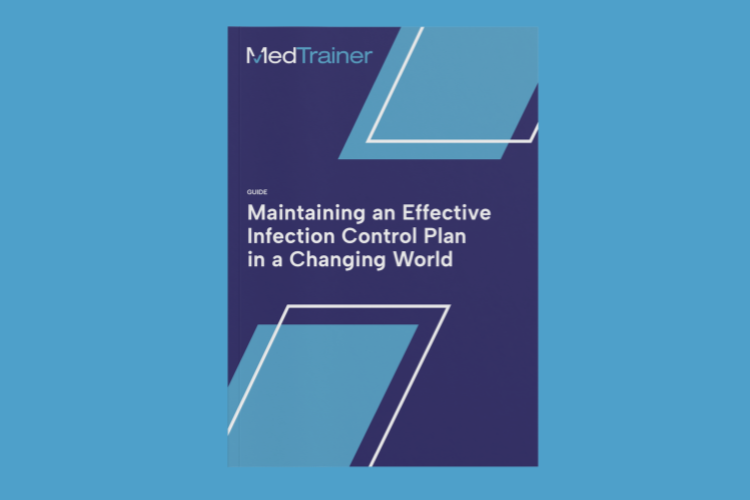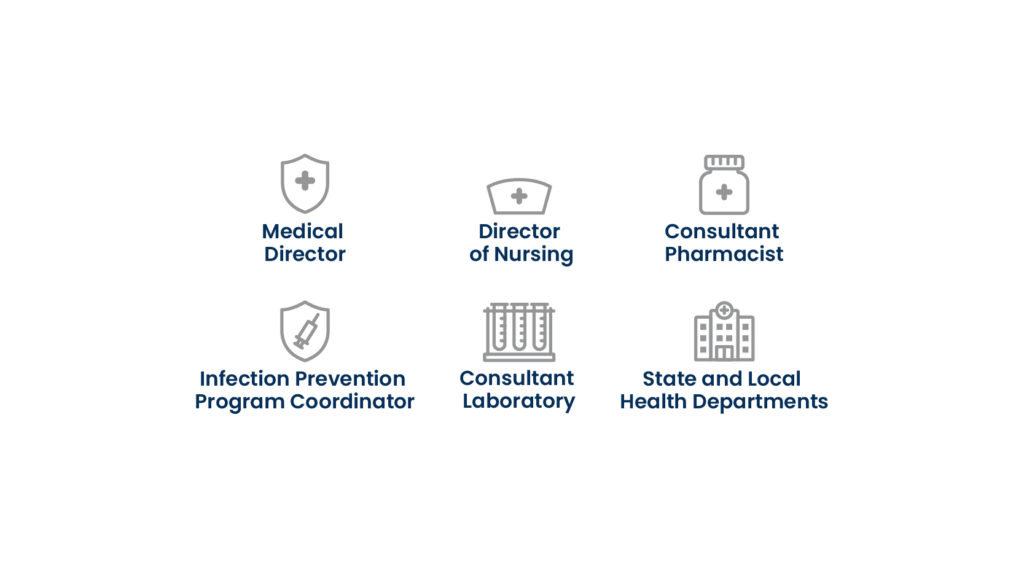Infections are a $28.4 billion problem leaving healthcare facilities continually working to do more to address them.
Sure, you’ve got a written infection control plan (ICP), but is it doing its job to protect your patients, staff, and facility?
In today’s rapidly changing world, it is hard for even the most prepared facilities to manage the emerging risks, shifting regulations, and effects of ongoing staffing challenges.
In this post, we’ll look at the infection control and prevention pressures healthcare organizations are now feeling and the impact on compliance teams.

Take a deeper dive into infection control plans in this free ebook.
New Pressures for Infection Control Plans
Compliance teams are used to constantly changing regulations. In fact, facilities in California will soon need to comply with new non-emergency COVID-19 prevention regulations.
But now more than ever, there are more pressures impacting your team’s ability to prevent infection. Your written infection control plan is the best way to guide staff and providers to decrease infection rates and avoid infection prevention-related deficiencies, which are among the most common. As you update your ICP this year, keep in mind these pressures that accompany the continuous evolution of infection control and prevention.
Staffing Challenges
Unfortunately staffing struggles are projected to continue and this strain places additional pressure on infection prevention. When short staffed, inconsistencies in care and difficulty maintaining correct processes are more likely. Plus employees are more tempted to skip critical steps or training, putting patient care in jeopardy.
Placing an emphasis on your ICP can actually help to alleviate some of that pressure. Staff benefits of a strong ICP include:
- Reduction of additional work that goes into managing infections.
- Lowering the staff burden for an already tight shift, ensuring they don’t need to add additional visits and care protocols for infected patients.
- Offering confidence and a feeling of preparation when faced with a care decision or a surveyor’s visit.
- Better patient outcomes that help your facility maintain a high quality of care rating, which makes it easier to attract staff and fill vacancies.
With tools to help you manage training, streamline documentation, and better support employees, you can fight staffing shortages and elevate your facility’s infection management.
Rapidly Emerging Diseases
Infection control has become even more critical as diseases are emerging now that have a wide impact in the United States and abroad. The pathogenicity of infections is becoming higher, which increases the threats they pose to individuals in healthcare settings.
Antibiotic-resistant infections are a reality that healthcare workers will be confronting for the foreseeable future. However, a written infection control plan can help healthcare workers take control of antibiotic use and infection control in their facilities – doing their part to reduce antibiotic resistance (AR) and sepsis among their patients.
Sepsis and AR are two sides of the same coin: As rates of AR increase, infections that cannot be treated with antibiotics evolve into sepsis more frequently. As many as one in three antibiotic prescriptions are unnecessary.
In addition to including antibiotic stewardship in your ICP, there are several steps your facility can take to manage antibiotic-resistant infections:
- Follow the CDC recommendations for antibiotic stewardship. This will help optimize appropriate antibiotic use at your facility without overprescribing.
- Train staff and patients on sepsis, help them recognize the symptoms and identify it early.
- Ensure all employees have access to policies, manufacturers’ documentation, and training to reference when they have a question.
Roles Involved in Antibiotic Stewardship

Data from this CDC guide
Want to learn more? Watch A World Gone Viral: What You Need to Know About Infection Prevention.
Threats to Health Equity
Health disparities affect the access individuals have to healthcare, their ability to get effective treatment, and education about healthcare. And while AR can affect anyone, antibiotic-resistant infections are often connected to healthcare inequities such as socioeconomic status, underlying medical conditions, access to healthcare, and even the ZIP code an individual resides in.
When your ICP supports even better understanding and recognition of the signs of infection, it will have a big impact on your minority populations and help create a more equitable health outcome for the patients you are treating. Consider including this information in your ICP:
- Comprehensive incident reporting process to identify supply or behavior trends that are impacting infection rates.
- Require employee access to policies and documents so they can review the correct use at all times.
Focus on Your Written Infection Control Plan To Follow the Evolution
As an already busy (or at capacity) compliance team, it’s daunting to see new infection control pressures coming. But your attention to detail and organization-wide view are exactly what’s needed to ensure your organization’s preparation – starting with your written infection control plan.
Prioritize ICP updates that identify risks, educate staff, and measure what matters most to prevent healthcare-acquired infections. Consider implementing technology, such as MedTrainer, that will increase your team’s efficiency and compliance – giving you the time you need to prepare for new infection control challenges. See MedTrainer in action.
